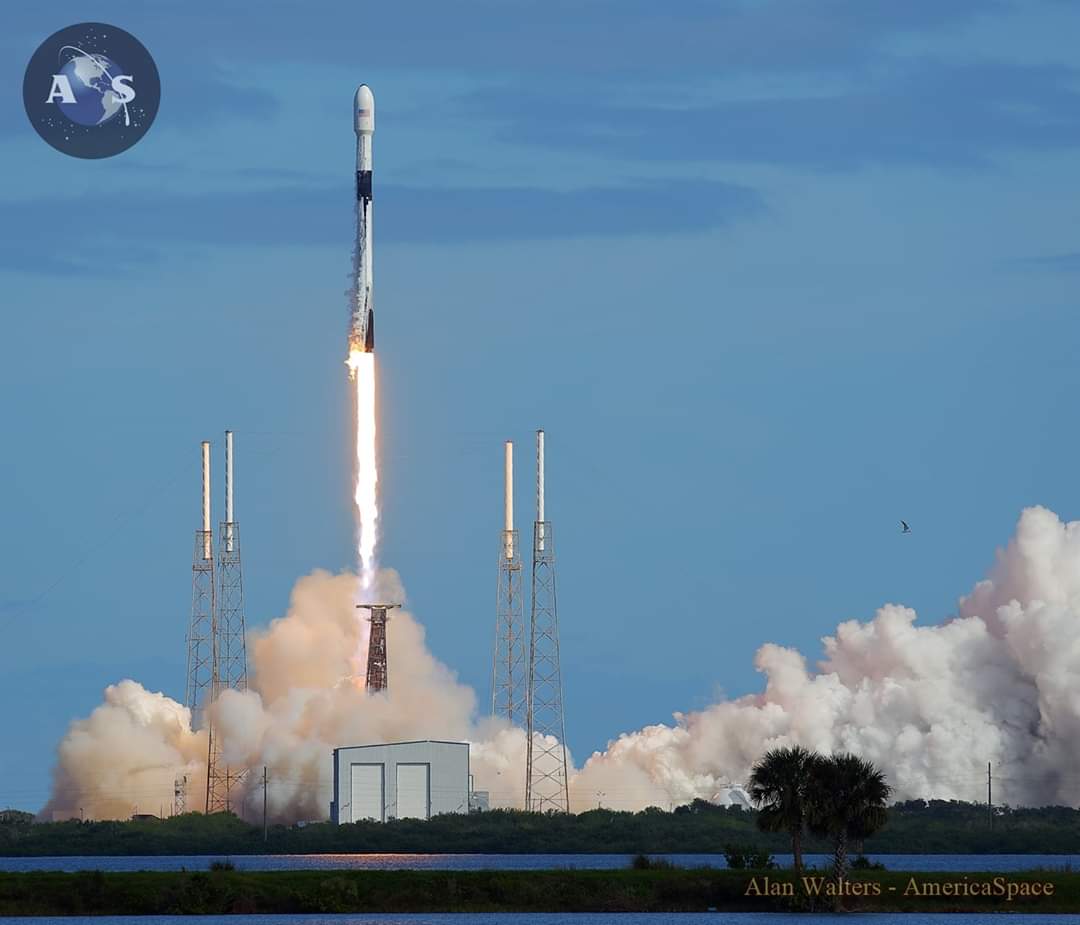
SpaceX has successfully launched one of its largest payloads to date, following a spectacular Veterans Day liftoff of the first, four-times-used Falcon 9 core from Space Launch Complex (SLC)-40 at Cape Canaveral Air Force Station, Fla. The 230-foot-tall (70-meter) booster—its blackened and scorched lowermost section presenting visible testament to three previous ascents and high-speed re-entries over the past 16 months—roared away from the Cape at 9:56 a.m. EST Monday, 11 November. It then returned to a smooth touchdown on the Autonomous Spaceport Drone Ship (ASDS), “Of Course I Still Love You”, offshore in the Atlantic Ocean.
And a little more than an hour into the mission, the process of deploying 60 flat-packed Starlink internet communications satellites got underway. Further Starlink missions will follow, as SpaceX seeks to emplace several thousand of these satellites into low-Earth orbit by 2024. Prior to launch, an issue was noted with one of the satellites. “Watching 1 sat that may not orbit-raise,” SpaceX tweeted. “If not, 100% of its components will quickly burn up in Earth’s atmosphere.”
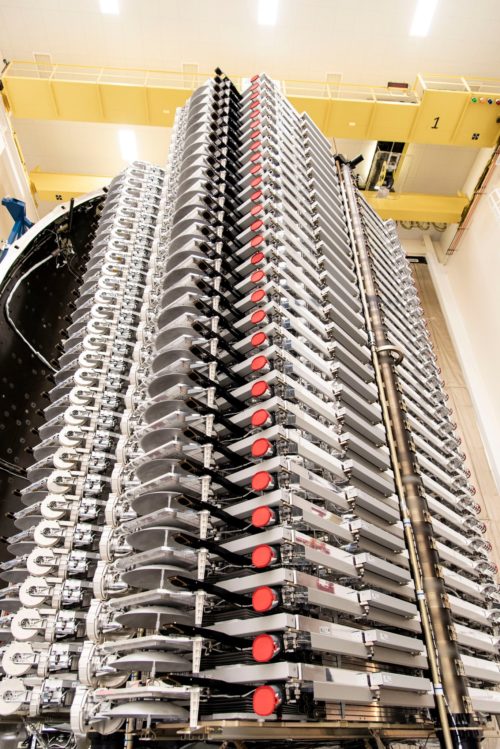
Starlink has been described by SpaceX founder and CEO Elon Musk as a means of revolutionizing low-cost broadband internet provision, as well as establishing a much-needed financial base for his ambitious plan to eventually colonize Mars. The $10 billion project was unveiled by Mr. Musk during an event in Seattle, Wash., back in January 2015, when he identified Starlink as a means of opening the way for low-cost broadband access to boost data speeds and increase the availability of internet access worldwide. He added that it could also provide competitively-priced services to urban regions and Federal Communications Commission (FCC) chariam Ajit Pai stressed that Starlink carries great potential to bring internet access to rural and underserved areas of the United States. Under the announced plans, an eventual network of 12,000 satellites in very-low-Earth orbit could potentially handle up to half of all backhaul communications traffic and perhaps a tenth of all local internet traffic in high-population-density cities.
In November 2016, SpaceX identified the network as a “non-geostationary” concept, with initial coverage spanning the Ku-band and Ka-band portions of the electromagnetic spectrum, respectively between 12-18 GHz and 26.5-40 GHz. By the late spring of the following year, plans for a second orbital “shell” of satellites were filed with the FCC to utilize the V-band, a region from 40-75 GHz not routinely used for commercial communications purposes. In fact, the V-band has historically been employed for millimeter-wave radar research and other scientific applications, although it has been described as having benefit for high-capacity terrestrial millimeter-wave communications systems.
Early plans called for Starlink to feature 4,425 Ku-/Ka-band satellites at an altitude of 710 miles (1,150 km) and a further 7,518 V-band birds at 210 miles (340 km), producing a total population of around 12,000 in low-Earth orbit by the mid-2020s. In November 2018, SpaceX made new regulatory filings with the FCC to adjust its previously granted license to operate almost a third of the Ku-/Ka-band complement—around 1,584 satellites—at a much lower altitude of 340 miles (550 km). That proposal was approved in April 2019. Operations at such low altitudes are expected to experience particularly high levels of atmospheric drag and a shorter operational lifetime, with SpaceX having noted that individual Starlinks’ useful lives will range from five to seven years. When their term draws to a close, they will be maneuvered to a “disposal orbit” for controlled re-entry within 12 months.
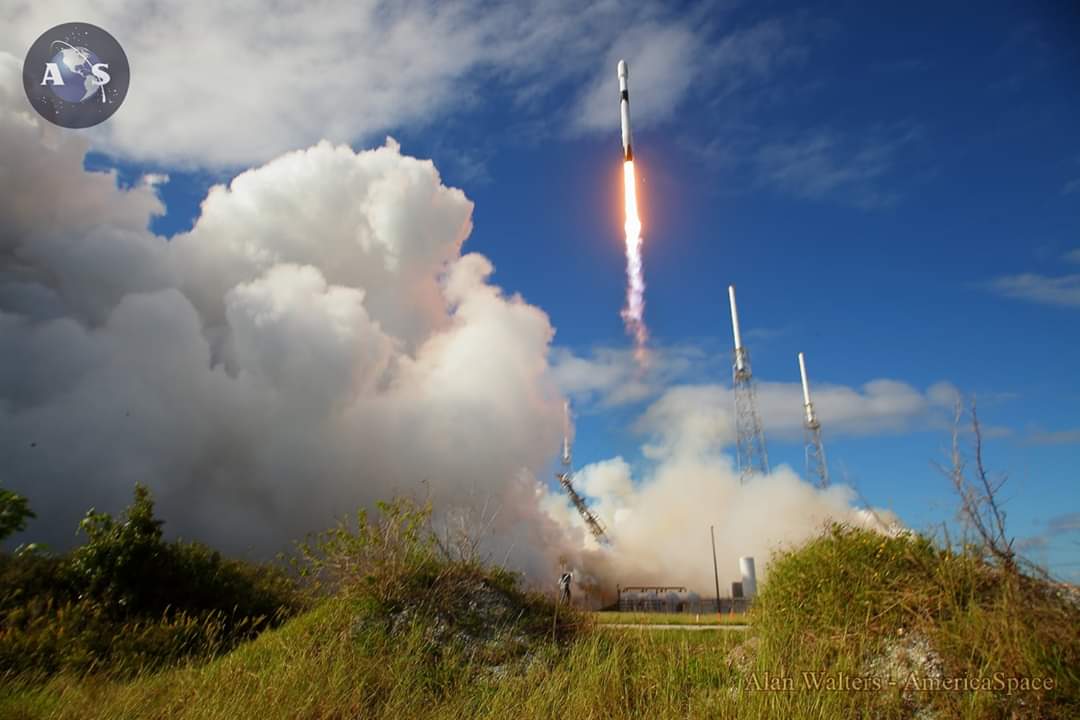
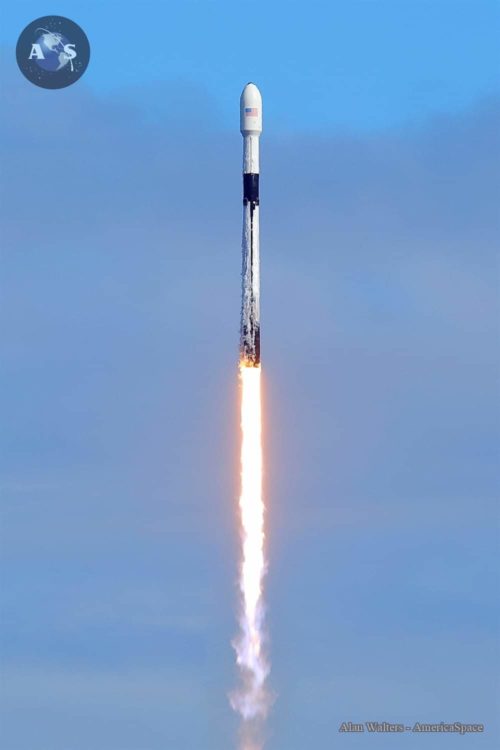
“Components of each satellite are 100-percent demisable and will quickly burn up in Earth’s atmosphere at the end of their life-cycle,” noted SpaceX in its pre-flight press kit for today’s mission, “a measure that exceeds all current safety standards.”
Two test satellites, dubbed MicroSat-1a and MicroSat-1b, were originally scheduled to validate the concept, but were eventually relegated to serve as ground-based test articles, as the development of the more capable MicroSat-2a and MicroSat-2b took priority. Those two satellites were later renamed Tintin-A and Tintin-B and flew from Vandenberg Air Force Base, Calif., riding piggyback with Spain’s Paz radar-imaging satellite in February 2018. From an orbit of about 320 miles (515 km), they successfully validated the principles of Starlink’s phased-array broadband antenna, working in tandem with five ground-based test sites in the United States and three mobile stations. Finally, in May 2019 the first 60 “production design” Starlinks were boosted into orbit; with the exception of three which failed shortly afterwards, the bulk of this group remains healthy.
“Since the most recent launch of Starlink satellites in May,” it was noted, “SpaceX has increased spectrum capacity for the end-user through upgrades in design that maximize the use of both Ka and Ku bands.”
Current plans are for Starlink to provide internet services to the northern United States and Canada in 2020, “after six launches”, with a rapid expansion to “near-global coverage of the populated world” by 2021, “after 24 launches”. Each Starlink satellite weighs about 570 pounds (260 kg) and consists of a compact, flat-panel design to minimize volume and permit the integration of a “dense launch stack” into the Falcon 9 payload fairing. “With four powerful phased-array antennas on each satellite,” SpaceX explained, “an enormous amount of throughput can be placed and redirected in a short time, for an order of magnitude lower cost.” Standardized solar arrays, in-house-built star trackers and efficient krypton-fed ion thrusters complete each Starlink bird.
As detailed in AmericaSpace’s article on Saturday, the first stage of this Falcon 9—tailnumbered “B1048”—became the first core to be flown as many as four times. It previously saw service in July 2018, when it delivered Iridium’s seventh set of NEXT global mobile communications satellites to low-Earth orbit, then again in October 2018 to loft Argentina’s SAOCOM-1A Earth-imaging platform into Sun-synchronous orbit. Most recently, last February B1048 boosted Indonesia’s Nusantara Satu communications satellite to geostationary altitude and Israel’s ill-fated Beresheet lunar lander to the Moon. Returning from each of its three missions, B1048 survived the worst oceanic weather conditions ever experienced when it touched down on the deck of the Autonomous Spaceport Drone Ship (ASDS) “Just Read the Instructions” and logged the first-ever touchdown of an orbital-class rocket stage on solid ground at Vandenberg Air Force Base, Calif.
In readiness for its fourth launch, B1048 was erected on SLC-40 at Cape last week and completed a successful static fire test of its nine Merlin 1D+ engines on Tuesday, 5 November. It was then returned to its horizontal integration facility for the addition of the payload fairing and was confirmed vertical back on SLC-40 as night fell on Sunday evening. As has become customary in Falcon 9 operations, fueling of the booster with liquid oxygen and a highly refined form of rocket-grade kerosene (“RP-1”) commenced about 35 minutes ahead of the 9:56 a.m. EST targeted T-0 on Monday.
As the minutes ticked away for SpaceX’s 11th mission of 2019, propellant loading was concluded and at T-45 seconds the Launch Director issued a definitive “Go for Launch”. Three seconds before liftoff, the nine Merlins thundered to life with a combined propulsive yield of 1.5 million pounds (680,000 kg) and at T-0 the vehicle was released from SLC-40 to begin a fast climb into the morning sky. B1048 did its fourth job perfectly, shutting and separating at 2.5 minutes into the climb and returning to a smooth oceanic touchdown on the Autonomous Spaceport Drone Ship (ASDS), “Of Course I Still Love You”, situated offshore in the Atlantic Ocean. With this quartet of successful missions under its belt, B1048 has now logged two East Coast ASDS landings, one West Coast ASDS landing and a single touchdown on solid ground at Vandenberg Air Force Base. The Block 5 first-stage cores are reportedly capable of ten missions apiece.
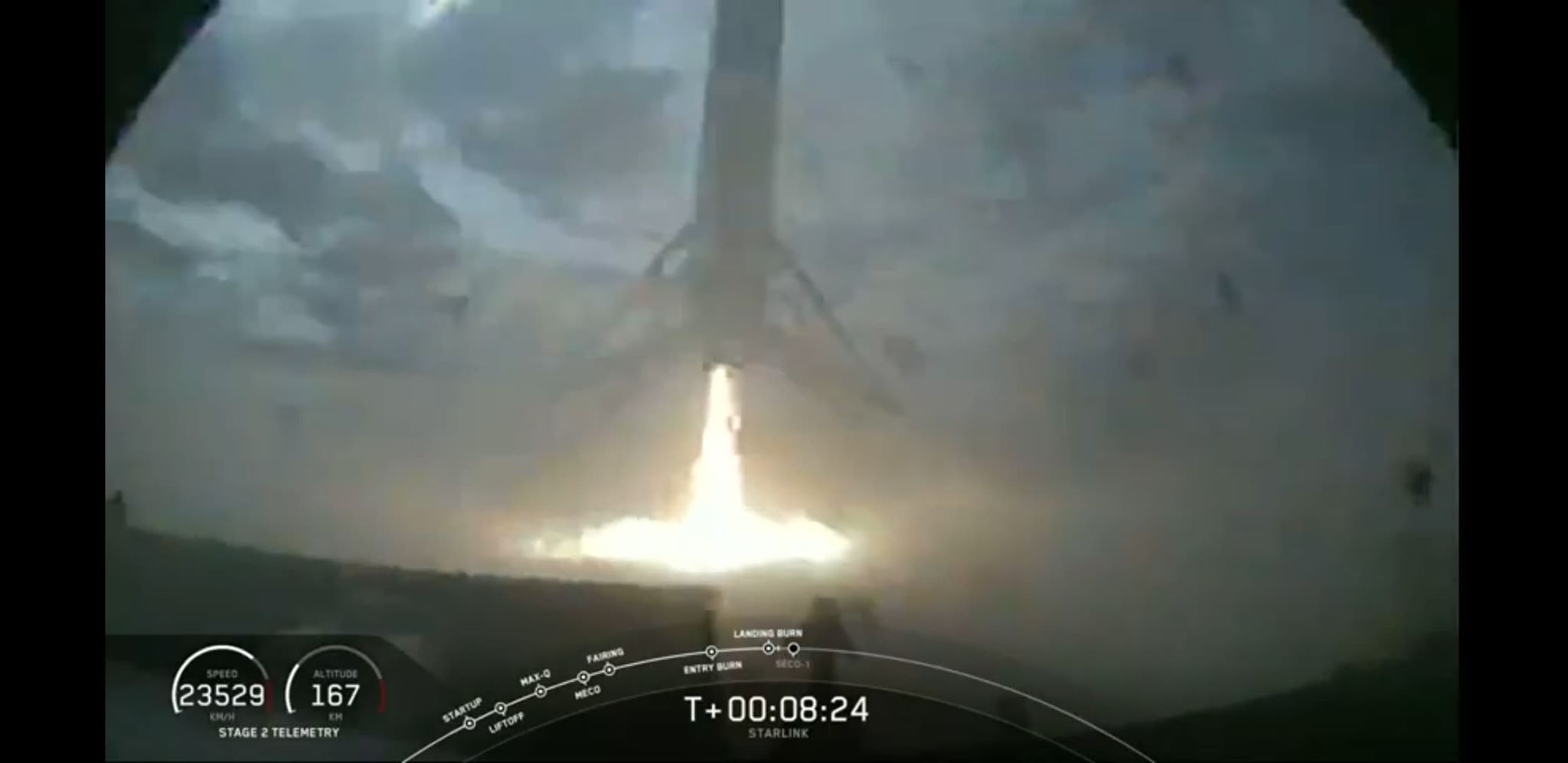
Significantly, today’s flight also marked the first re-use of the payload fairing “halves” previously flown on the Falcon Heavy mission back in April, which carried Saudi Arabia’s heavyweight Arabsat-6A communications satellite. The halves were due to be retrieved by the fairing recovery vessels, Ms. Tree and Ms. Chief, about 45 minutes after liftoff. However, as noted by AmericaSpace’s Launch Tracker, high seas in the prime recovery zone precluded the possibility of the fairings being recovered for further re-use, although they will be picked up from the ocean.
But as SpaceX regularly mentions, the first-stage landings provide a secondary objective to the main role of getting the payload to space. With B1048 gone, the upper stage’s Merlin 1D+ Vacuum engine fired for just over six minutes to complete the delivery of the 60 Starlink satellites. During the course of its lengthy burn, the payload fairing was jettisoned and after engine shutdown the stack drifted for almost an hour, preparatory to deployment. Sixty minutes after leaving the Cape, the release of the Starlinks got underway, as SpaceX’s total number of these satellites in orbit now passes 100.
.
.
FOLLOW AmericaSpace on Facebook and Twitter!
.
.





